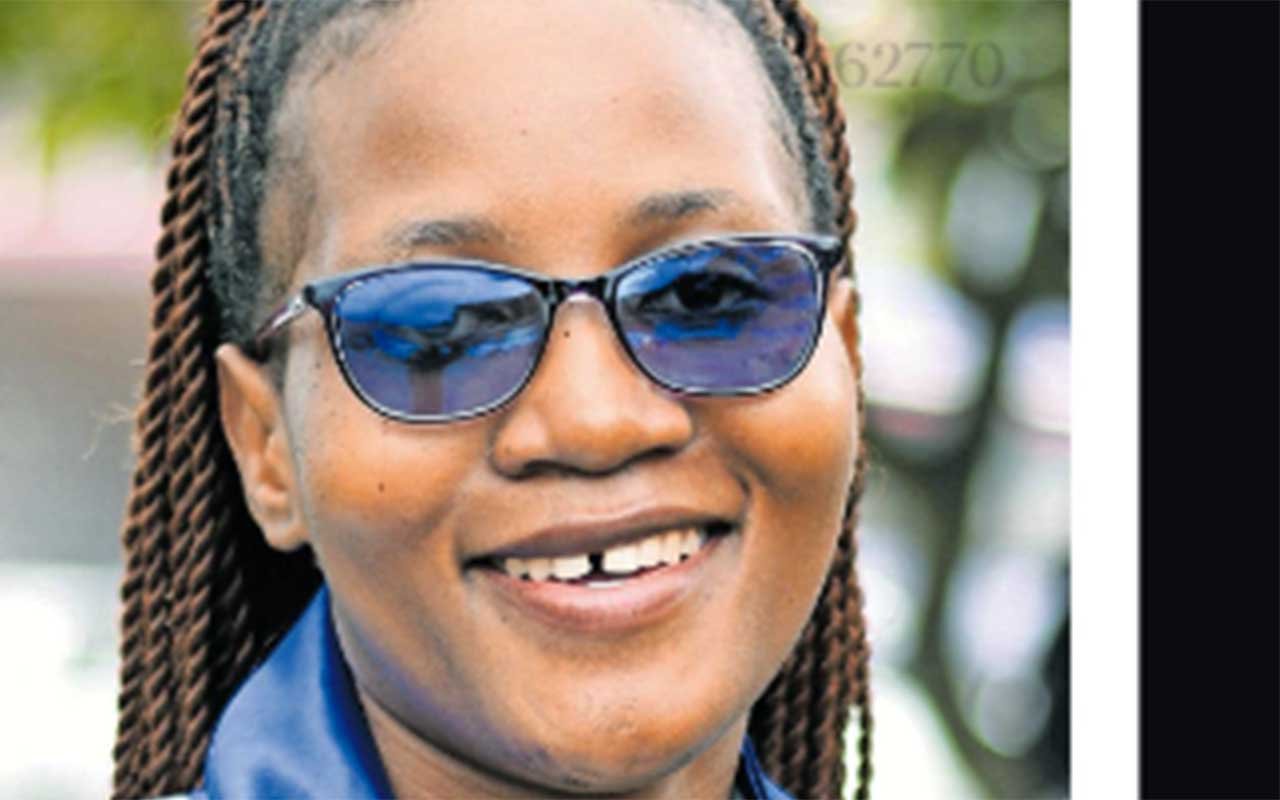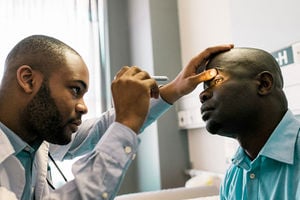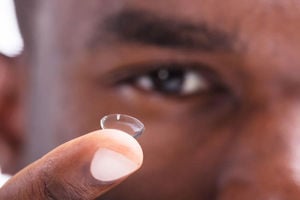
Jackline Baboneraawo, an ophthalmologist at Lapaire, says she suffered severe sight problems when she was in Primary Seven. PHOTOs/PROMISE TWINAMUKYE
Aside from being called wiseacres, especially at school, some people wear glasses to make a fashion statement.
Eve Nassali, a businesswoman in Kikuubo, says glasses also make the wearers look outwardly classy and confident, even if it is far from the truth inwardly for most.
It was none of the above for Jackline Baboneraawo, an ophthalmic clinical officer at Lapaire. Glasses gave her life and without them, she had lost a lot.
Her vision journey began when she was seven years old. Baboneraawo recalls how she would complain about seeing hazy letters or even objects but her concerns were often brushed aside.
Like many parents at the time, hers did not take the young girl’s complaints seriously until her eyesight became a pressing issue, particularly when it came time for exams in Primary Seven. She could hardly see.
It was then, in desperation, that she was taken to the eye clinic at Jinja Regional Referral Hospital.
The doctors discovered she had severe astigmatism, a condition where the cornea's irregular shape causes the eye to form more than one image, leading to headaches and blurry vision. Baboneraawo vividly remembers the headaches, and the distorted sight.
“The doctor prescribed glasses and he quickly mentioned that had I received treatment earlier, my condition would have been less severe. With my new glasses, I managed to continue my studies. I completed, Senior Four,” she smiles.
Into a moment of blindness
However, when Baboneraawo was in Senior Five, she broke her glasses. She knew her family's financial struggles and knew how hard it would be to replace her glasses. So she spent a school term without them, and then one day, while climbing the stairs to her class, her vision suddenly failed her.
“I held onto a colleague’s hand, who guided me to class without revealing that I had lost my sight. That was before I fainted and went in a coma for two days,” she says.
The frightening experience led to her being sent home and admitted to the hospital, where she spent what she terms as ‘two blackout’ days, unsure of what had happened.
That incident cost her an entire year of schooling. After losing that year, everything seemed to change. She was forced to repeat Senior Five, and her studies became challenging.
The emotional toll of watching her peers advance while she remained behind destabilised her. She eventually decided she could not return to her school and preferred to be enrolled elsewhere.
Purpose
Through this ordeal, a purpose began to form within Baboneraawo . The pain of losing a year, the isolation of struggling with her vision, and the trauma of being left behind led her to pursue a future in eye care. She did not know much about the field then, but she knew there was one school in Uganda that offered a diploma in ophthalmology, and she was determined to go there.
Her journey had sparked a deep desire to help others avoid the hardships she had endured. True to her dream, she is now an ophthalmologist at Lapaire, where she gets to diagnose and treat people with eye problems.

Take children for eye tests. Photo/Firefly generated
World Sight Day
Celebrating World Sight Day 2024, one is reminded that eye health is critical for all ages, especially for children whose entire futures depend on their ability to learn, explore, and grow.
Eyesight may seem like just another part of our daily lives, but it is so much more. It is the lens through which children experience the world, learn about their surroundings, and dream of their future. With initiatives such as World Sight Day 2024, we can ensure that every child—like Aisha—can dream big, see clearly, and build a brighter future.
Aisha (not real name) is an eight-year-old girl who dreams of becoming a doctor. Her teachers described her as distracted, and her grades were slipping. Little did they know that it was not a lack of interest or ability, but her inability to see clearly.
Aisha’s mother took her for an eye test. The young girl was struggling with short-sightedness, a common but treatable condition. After getting a pair of glasses, the world opened up to her in a new way—letters on the blackboard were clear, the lines in her books straight, and the faces of her friends no longer blurred. In a matter of days, Aisha went from struggling in class to excelling, her confidence restored.
Parents, according to Oliver Wambile, the senior public relations officer at Lapaire, play a big role in moulding children’s future. Parents are now more focused on what children want and not what they need such as keeping them busy with gadgets. This habit ends up causing children myopia.
“Let children play out of the house for at least two hours a day so the eyes can get used to different colours and objects surrounding them. From the age of 0 to 17, children’s eye muscles are still developing, a reason why they need to be outside more,” Wambile says.
Mindset
Not only do affected eyes affect one’s academic performance but also their self-esteem is impacted. This happens especially at school where wearing glasses sometimes comes off as showing off.
“I have just been interacting with one child who said, "You see, I cannot wear my glasses in peace because my friends think I am a wiseacre." So, even their social life is affected, as well as their motor activities. We have seen some children who have sleep disorders because of their vision,” Baboneraawo.
Because of that, she emphasises early diagnosis and treatment to counteract future probable vision loss in children.
Common eye problems
Baboneraawo says eye allergies are currently very common issues in Uganda. In every family, she says, one is likely to find a child or two battling allergies, often associated with itchy eyes. And, bacterial conjunctivitis, where eyes discharge a yellowish substance, is another issue.
The opthalmologist adds that short-sightedness is also on the rise, largely due to the lifestyle introduced to children at an early age, which explains why more children are wearing glasses compared to previous generations.
“There are also children battling long-sightedness or hyperopia, astigmatism, congenital cataracts, and glaucoma. Retinopathy of prematurity is another condition we see. So, we need to watch for anything in a child's eyes that seems off or different from other children, as it may indicate an issue,” she cautions.
Causes
Baboneraawo believes that lifestyle and diet play a big role, as well as conditions such as high blood pressure and diabetes in affecting the eyes. She does not rule out infectious diseases and genetics in conditions such as glaucoma, which may not appear at birth but can manifest later due to family history. She also attributes the high eye cases to trauma, especially in school-going children.
“Last week, I had two children, one whose friend pierced their eye with a pencil and another who was injured while playing. These incidents, though small, can have serious consequences, even causing the complete loss of an eye,” she says.

Sun glasses protect ones eyes from sun rays. Photo/FIreFly generated
Statistically
World Sight Day which was observed on the second Thursday of this month fell under the theme, Children, love your eyes, shines a light on the urgency of protecting children's eyesight, ensuring they have the visual clarity they need to learn, play, and thrive.
Globally, at least 2.2 billion people suffer from near blindness or long-distance visual impairment and among at least one billion of these, visual impairment could be avoided. Almost 90 percent of visually impaired people live in developing countries, including Uganda. Women also run a higher risk of visual impairment and blindness than men. In Uganda, in particular, 5.9 percent of the population is visually impaired, or six out of every 100 people, while 144,000 people are completely blind.
Bottom line
For conditions such as glaucoma, regular check-ups to catch it early are emphasised. Baboneraawo says once vision is lost due to glaucoma, it cannot be restored.
“Medically, lost vision cannot be regained. That is why we stress early diagnosis and, if necessary, surgery to preserve the remaining vision. For congenital conditions, we emphasise antenatal care for mothers. Some conditions, such as syphilis, can pass through the placenta, so it is important to address them during pregnancy,” she says.
If anything seems abnormal in a newborn’s eyes, such as on the first day or within the early months, Baboneraawo advises having an ophthalmologist examine the child.
Conditions, for example, a child's inability to follow light or objects can be noticed early and should be addressed promptly.
Jackline Baboneraawo, an opthalmologist at Lapaire, says she suffered severe sight problems when she was in Primary Seven.



